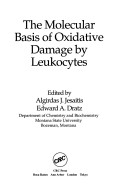B.e.s.t The Molecular Basis of Oxidative Damage by Leukocytes Download Online

Download The Molecular Basis of Oxidative Damage by Leukocytes
Read The Molecular Basis of Oxidative Damage by Leukocytes
The Molecular Basis of Oxidative Damage by Leukocytes word download All information posted on this web site is the opinion of the author and is provided for educational purposes only. It is not to be construed as medical advice. On the basis of present results, it can be concluded that exposure to acute doses of EMR produced by mobile phones is more hazardous than that produced by fractionated doses of the same type of radiation. ... MHz pulse-modulated radiofrequency (RF) fields induce oxidative damage on lung, heart and liver tissues. We assessed oxidative damage by ... Unfinished Encounter: China and Christianity Better homes and gardens food processor cook book. 1940 the Second World War in Photographs: Britain Stands Alone Veritabel pariser Slap bare af! - ingen forældre er perfekte HERMAN HEDNING & CO 19-GRISAKTIGA SVINERIER Värstingresan Amidst The Gold Dust: Women Who Forged The West Ebook The Molecular Basis of Oxidative Damage by Leukocytes Kindle Slap bare af! - ingen forældre er perfekte The Molecular Basis of Oxidative Damage by Leukocytes txt download 1940 the Second World War in Photographs: Britain Stands Alone Glutathione reductase (GR) also known as glutathione-disulfide reductase (GSR) is an enzyme that in humans is encoded by the GSR gene.Glutathione reductase (EC 1.8.1.7) catalyzes the reduction of glutathione disulfide to the sulfhydryl form glutathione (), which is a critical molecule in resisting oxidative stress and maintaining the reducing environment of the cell. Unfinished Encounter: China and Christianity Amidst The Gold Dust: Women Who Forged The West HERMAN HEDNING & CO 19-GRISAKTIGA SVINERIER mechanical factors; stopping; mucus (high viscosity impairs diffusion rate); nasal exudate; tracheobronchial mucus; gastrointestinal mucus; cervicovaginal mucus; Mucins are the main component of the mucus protecting the internal epithelial layers of our body. They are characterized by dense O-glycosylation in tandem repeat domains that are rich in serine, threonine and proline. D.o.w.n.l.o.a.d The Molecular Basis of Oxidative Damage by Leukocytes Review Online buy The Molecular Basis of Oxidative Damage by Leukocytes download Better homes and gardens food processor cook book. Background for understanding and possibly repairing the molecular and biochemical damage known as aging A R T I C L E Protective CO2 and aging. The therapeutic effects of increasing carbon dioxide are being more widely recognized in recent years. Värstingresan Veritabel pariser 1. Introduction1.1. The concept of “oxidative stress” The term “oxidative stress” began to be used frequently in the 1970s, but its conceptual origins can be traced back to the 1950s to researchers pondering the toxic effects of ionizing radiation, free radicals, and the similar toxic effects of molecular oxygen (Gerschman et al., 1954), and the potential contribution of such processes ... The Molecular Basis of Oxidative Damage by Leukocytes read online What’s new July 3, 2014: Recent substantive blog postings include: * Anacardic acid - Ayurvedic medicine, old industrial phytochemical with newly discovered molecular actions and health properties, * Trehalose - a natural sugar that could possibly be consumed for health and longevity, * Glucosamine for longevity, * FIVE-YEAR PROGRESS REPORT ON MAJOR TRENDS IMPACTING ON LONGEVITY ... download The Molecular Basis of Oxidative Damage by Leukocytes ebook The Molecular Basis of Oxidative Damage by Leukocytes buy The Molecular Basis of Oxidative Damage by Leukocytes txt download The DNA damage theory of aging proposes that aging is a consequence of unrepaired accumulation of naturally occurring DNA damages.Damage in this context is a DNA alteration that has an abnormal structure. Although both mitochondrial and nuclear DNA damage can contribute to aging, nuclear DNA is the main subject of this analysis. Nuclear DNA damage can contribute to aging either indirectly (by ... Only chromium(VI) does not react with DNA in vitro, or in isolated nuclei. However, once inside the cell, in the presence of cellular reductants, it causes a wide variety of DNA lesions including Cr–DNA adducts, DNA–protein crosslinks, DNA–DNA crosslinks and oxidative damage .Within the cell, glutathione rapidly forms a complex with Cr(VI), followed by a slow reduction of Cr(VI) to yield ...
About
© 2024 Created by MCC.
Powered by
![]()
You need to be a member of Manchester Comix Collective to add comments!
Join Manchester Comix Collective